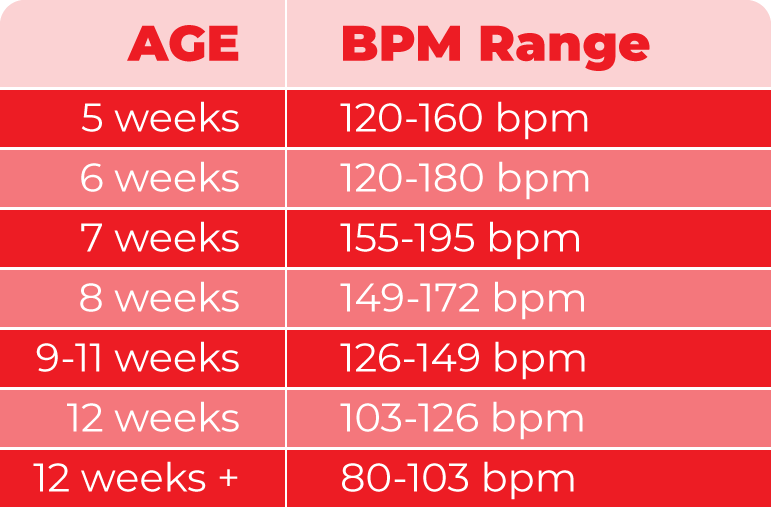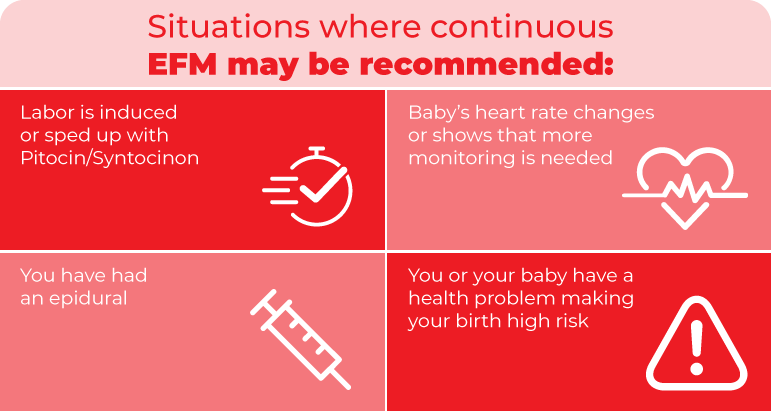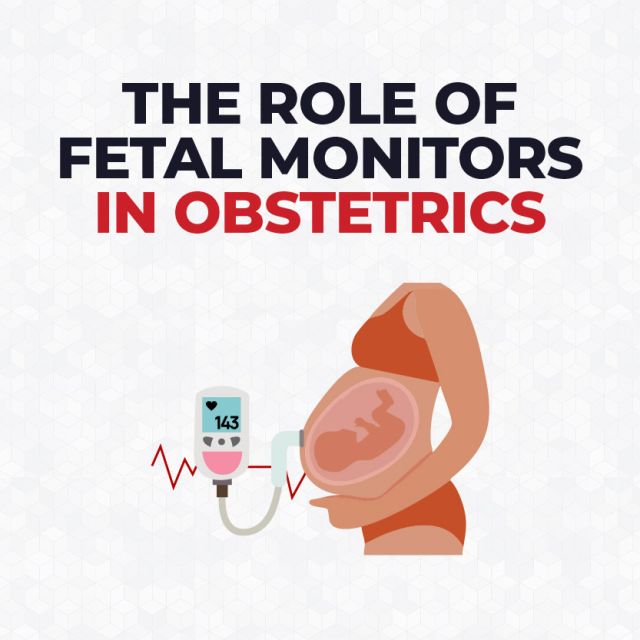Fetal Heart Rate Monitoring: Explained

What is fetal heart rate monitoring?
Fetal heart rate monitors are often used for measuring the rhythm and heart rate of your baby. Therefore, allowing your doctor or OB/GYN to see how your baby is doing.
Why is fetal heart rate monitoring done?
Fetal heart rate monitors are used for detecting changes or abnormalities in a normal heart rate pattern during pregnancy and/or labor.
Wondering what’s a normal fetal heart rate for your pregnancy term? Reference our chart below:

How does fetal monitoring work?
There are 2 ways of performing fetal monitoring: External fetal monitoring and Internal fetal monitoring.
External fetal monitoring
External Monitoring is performed by wrapping two belts around your abdomen. One belt will be detecting the fetal heart rate by using a doppler. The other belt will be measuring the length of contractions.
Internal fetal monitoring
Internal Monitoring is performed by using an electrode. The electrode will be recording the fetal heart rate after being placed on the fetus’s scalp. Typically doctors will use this method if they are unable to get a good reading from EFM.
What are the methods of external monitoring?
So, there are 2 methods of external fetal monitoring during pregnancy and/or labor: Auscultation and Electronic fetal monitoring.

Auscultation
Auscultation is periodically listening to the fetal heartbeat. It is done by pressing either a stethoscope or a doppler transducer against the abdomen. Doctors typically use auscultation throughout labor as it is routine for low-risk pregnancies.
Electronic fetal monitoring
Electronic fetal monitoring works by using specific instruments for recording and measuring the fetus’s heartbeat to contractions. If you and your baby are doing well, you’d only be using EFM for the first hour of labor.
What happens if the fetal heart rate pattern is abnormal?
Coming back with an abnormal fetal heart rate? This could be indicating that your baby isn’t getting enough oxygen. In addition, certain substances can contribute to an abnormal fetal heart rate. So, check out the chart below:

However, an abnormal fetal heart rate pattern doesn’t always mean there is a present issue. Therefore, your OB/GYN might recommend getting further testing to determine what’s causing the abnormality.
Works Cited
https://www.acog.org/womens-health/faqs/fetal-heart-rate-monitoring-during-labor
https://www.hopkinsmedicine.org/health/treatment-tests-and-therapies/fetal-heart-monitoring
https://www.birthinjuryhelpcenter.org/fetal-heart-monitor-mistakes.html
https://www.gehealthcare.com/education/electronic-fetal-heart-rate-monitoring







